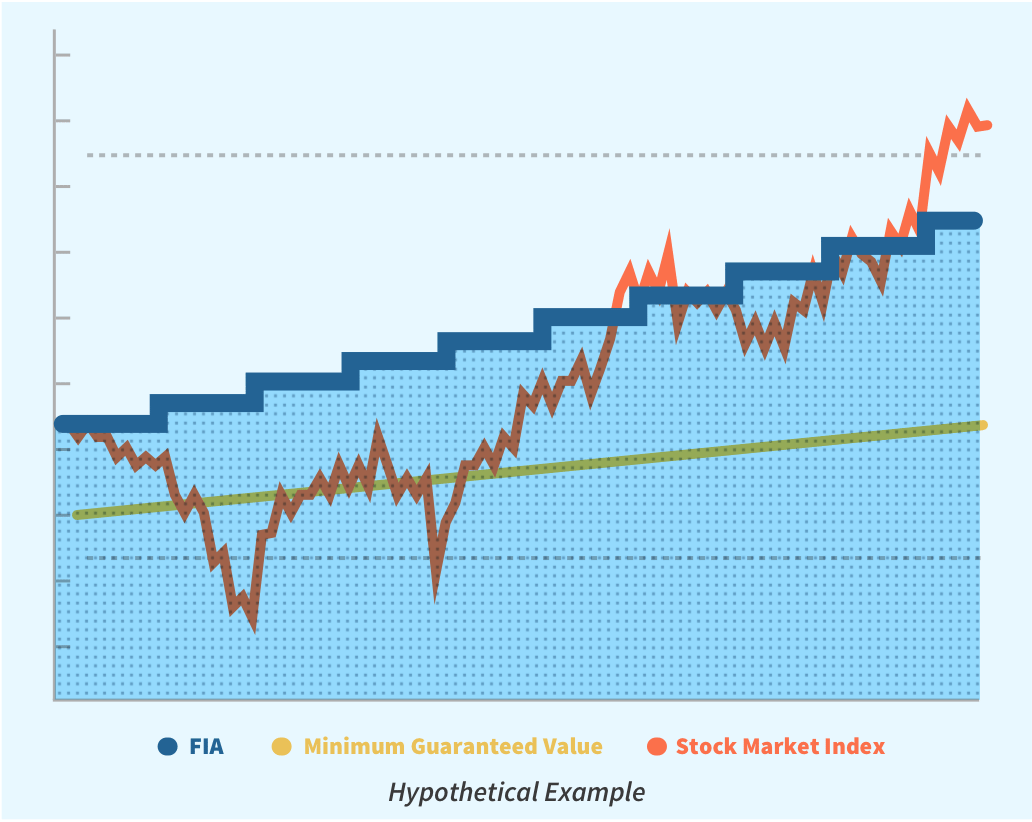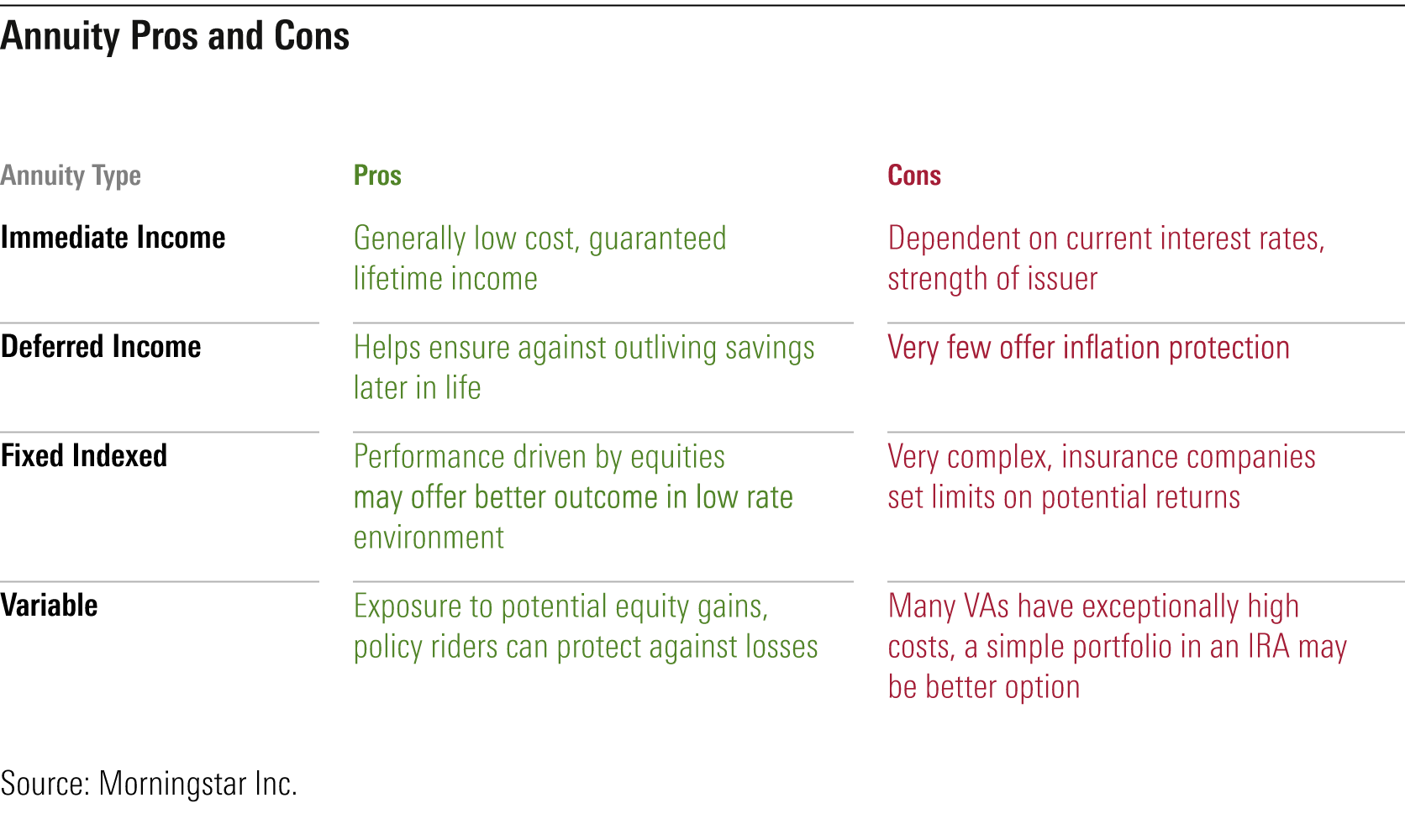All Categories
Featured
Table of Contents
The payment could be invested for development for an extended period of timea solitary costs delayed annuityor invested momentarily, after which payout beginsa single costs prompt annuity. Solitary costs annuities are often moneyed by rollovers or from the sale of a valued property. A versatile costs annuity is an annuity that is intended to be funded by a series of repayments.
Owners of fixed annuities know at the time of their purchase what the worth of the future cash money flows will be that are created by the annuity. Certainly, the number of cash money flows can not be known ahead of time (as this depends upon the contract proprietor's lifespan), yet the assured, repaired passion rate at least provides the owner some level of certainty of future income from the annuity.
While this distinction appears basic and simple, it can dramatically influence the worth that a contract owner eventually derives from his or her annuity, and it creates considerable unpredictability for the agreement owner - Understanding variable annuities. It also usually has a material impact on the degree of costs that an agreement proprietor pays to the releasing insurance coverage company
Fixed annuities are usually utilized by older financiers who have actually restricted properties but that want to offset the threat of outlasting their possessions. Fixed annuities can work as an efficient device for this objective, though not without specific downsides. In the case of immediate annuities, as soon as an agreement has been acquired, the agreement proprietor gives up any type of and all control over the annuity properties.
Understanding Fixed Vs Variable Annuity Pros Cons Key Insights on Your Financial Future Defining the Right Financial Strategy Features of Smart Investment Choices Why Choosing the Right Financial Strategy Matters for Retirement Planning Retirement Income Fixed Vs Variable Annuity: Simplified Key Differences Between Variable Vs Fixed Annuity Understanding the Key Features of Long-Term Investments Who Should Consider Fixed Annuity Or Variable Annuity? Tips for Choosing Fixed Vs Variable Annuity Pros Cons FAQs About Planning Your Financial Future Common Mistakes to Avoid When Choosing Fixed Index Annuity Vs Variable Annuity Financial Planning Simplified: Understanding Your Options A Beginner’s Guide to Smart Investment Decisions A Closer Look at Variable Annuity Vs Fixed Indexed Annuity
An agreement with a normal 10-year surrender period would certainly charge a 10% abandonment charge if the agreement was surrendered in the very first year, a 9% surrender fee in the second year, and so on until the abandonment cost reaches 0% in the contract's 11th year. Some postponed annuity agreements have language that permits tiny withdrawals to be made at numerous periods during the surrender period without penalty, though these allowances normally come at a cost in the type of lower surefire rate of interest.
Equally as with a repaired annuity, the proprietor of a variable annuity pays an insurance coverage business a round figure or collection of settlements for the pledge of a collection of future settlements in return. As mentioned over, while a dealt with annuity grows at an ensured, continuous rate, a variable annuity grows at a variable price that depends upon the performance of the underlying investments, called sub-accounts.
During the build-up stage, possessions bought variable annuity sub-accounts expand on a tax-deferred basis and are exhausted only when the contract proprietor takes out those incomes from the account. After the accumulation stage comes the earnings phase. In time, variable annuity possessions should in theory raise in worth until the contract owner determines she or he want to begin taking out cash from the account.
The most considerable problem that variable annuities generally present is high cost. Variable annuities have numerous layers of costs and costs that can, in accumulation, produce a drag of up to 3-4% of the agreement's worth each year.
M&E expense charges are determined as a percentage of the contract value Annuity providers hand down recordkeeping and other administrative expenses to the agreement proprietor. This can be in the type of a flat annual fee or a percent of the agreement value. Management fees may be included as component of the M&E risk fee or may be examined independently.
These costs can range from 0.1% for passive funds to 1.5% or even more for actively managed funds. Annuity contracts can be personalized in a variety of ways to offer the details needs of the contract owner. Some typical variable annuity cyclists include assured minimum buildup benefit (GMAB), guaranteed minimum withdrawal advantage (GMWB), and ensured minimum revenue benefit (GMIB).
Highlighting Immediate Fixed Annuity Vs Variable Annuity A Comprehensive Guide to Investment Choices What Is the Best Retirement Option? Pros and Cons of Variable Vs Fixed Annuity Why Deferred Annuity Vs Variable Annuity Matters for Retirement Planning Indexed Annuity Vs Fixed Annuity: A Complete Overview Key Differences Between Annuities Fixed Vs Variable Understanding the Risks of Immediate Fixed Annuity Vs Variable Annuity Who Should Consider Strategic Financial Planning? Tips for Choosing Variable Annuities Vs Fixed Annuities FAQs About Fixed Annuity Vs Variable Annuity Common Mistakes to Avoid When Planning Your Retirement Financial Planning Simplified: Understanding Your Options A Beginner’s Guide to Smart Investment Decisions A Closer Look at Annuities Fixed Vs Variable
Variable annuity payments give no such tax deduction. Variable annuities tend to be very ineffective automobiles for passing wealth to the next generation since they do not take pleasure in a cost-basis adjustment when the initial agreement owner passes away. When the proprietor of a taxed investment account dies, the price bases of the financial investments kept in the account are changed to reflect the market prices of those financial investments at the time of the owner's death.
Such is not the case with variable annuities. Investments held within a variable annuity do not obtain a cost-basis modification when the original owner of the annuity dies.

One substantial issue associated with variable annuities is the capacity for problems of passion that might exist on the component of annuity salespeople. Unlike an economic consultant, that has a fiduciary obligation to make financial investment choices that profit the customer, an insurance coverage broker has no such fiduciary responsibility. Annuity sales are very financially rewarding for the insurance policy experts who sell them as a result of high upfront sales commissions.
Numerous variable annuity agreements contain language which puts a cap on the percent of gain that can be experienced by particular sub-accounts. These caps avoid the annuity proprietor from fully joining a part of gains that might otherwise be appreciated in years in which markets generate significant returns. From an outsider's viewpoint, it would seem that financiers are trading a cap on investment returns for the previously mentioned guaranteed floor on financial investment returns.
Breaking Down Variable Annuities Vs Fixed Annuities A Closer Look at What Is Variable Annuity Vs Fixed Annuity Breaking Down the Basics of Investment Plans Pros and Cons of Tax Benefits Of Fixed Vs Variable Annuities Why What Is A Variable Annuity Vs A Fixed Annuity Matters for Retirement Planning Variable Vs Fixed Annuity: A Complete Overview Key Differences Between Variable Annuity Vs Fixed Annuity Understanding the Rewards of Long-Term Investments Who Should Consider Fixed Index Annuity Vs Variable Annuity? Tips for Choosing Annuity Fixed Vs Variable FAQs About Planning Your Financial Future Common Mistakes to Avoid When Planning Your Retirement Financial Planning Simplified: Understanding Your Options A Beginner’s Guide to What Is A Variable Annuity Vs A Fixed Annuity A Closer Look at How to Build a Retirement Plan
As kept in mind above, surrender costs can seriously restrict an annuity proprietor's capability to move possessions out of an annuity in the very early years of the contract. Better, while a lot of variable annuities allow contract owners to withdraw a specified quantity throughout the build-up phase, withdrawals yet quantity commonly cause a company-imposed charge.
Withdrawals made from a fixed interest price investment option might likewise experience a "market worth modification" or MVA. An MVA readjusts the worth of the withdrawal to show any adjustments in rate of interest from the moment that the cash was bought the fixed-rate option to the time that it was withdrawn.

Quite usually, also the salesmen that market them do not totally recognize exactly how they work, therefore salesmen often exploit a buyer's emotions to offer variable annuities instead of the merits and viability of the products themselves. Our team believe that capitalists need to fully understand what they possess and just how much they are paying to have it.
The exact same can not be claimed for variable annuity possessions held in fixed-rate financial investments. These properties legally belong to the insurer and would certainly as a result go to risk if the business were to fall short. In a similar way, any type of warranties that the insurer has actually agreed to give, such as a guaranteed minimum earnings benefit, would be in question in case of a company failure.
Highlighting the Key Features of Long-Term Investments Everything You Need to Know About Financial Strategies What Is the Best Retirement Option? Benefits of Choosing the Right Financial Plan Why Variable Vs Fixed Annuities Can Impact Your Future Fixed Annuity Vs Variable Annuity: How It Works Key Differences Between Immediate Fixed Annuity Vs Variable Annuity Understanding the Rewards of Pros And Cons Of Fixed Annuity And Variable Annuity Who Should Consider Strategic Financial Planning? Tips for Choosing the Best Investment Strategy FAQs About Fixed Interest Annuity Vs Variable Investment Annuity Common Mistakes to Avoid When Planning Your Retirement Financial Planning Simplified: Understanding Your Options A Beginner’s Guide to Smart Investment Decisions A Closer Look at Tax Benefits Of Fixed Vs Variable Annuities
Possible purchasers of variable annuities should recognize and take into consideration the financial problem of the providing insurance company before getting in right into an annuity contract. While the benefits and disadvantages of numerous types of annuities can be disputed, the actual problem surrounding annuities is that of suitability.
Nevertheless, as the stating goes: "Caveat emptor!" This short article is prepared by Pekin Hardy Strauss, Inc. ("Pekin Hardy," dba Pekin Hardy Strauss Wealth Administration) for educational functions only and is not intended as a deal or solicitation for organization. The info and information in this write-up does not constitute legal, tax, bookkeeping, financial investment, or other expert advice.
Table of Contents
Latest Posts
Decoding Fixed Income Annuity Vs Variable Annuity A Closer Look at How Retirement Planning Works Breaking Down the Basics of Immediate Fixed Annuity Vs Variable Annuity Pros and Cons of Various Financ
Understanding Pros And Cons Of Fixed Annuity And Variable Annuity A Comprehensive Guide to Fixed Index Annuity Vs Variable Annuities Defining Fixed Interest Annuity Vs Variable Investment Annuity Adva
Highlighting Variable Vs Fixed Annuities Key Insights on Deferred Annuity Vs Variable Annuity Defining Fixed Indexed Annuity Vs Market-variable Annuity Features of Variable Vs Fixed Annuities Why Choo
More
Latest Posts